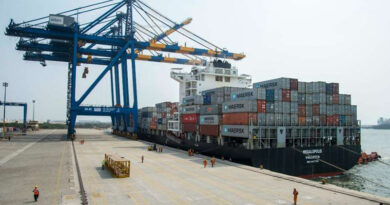India is ready to get out of the epidemic, the curbs imposed on the ministries are getting loose now
India, Asia’s third-largest economy led by Prime Minister Narendra Modi, is now set to come out of the worst phase of the 2020 pandemic. The restrictions imposed by the Finance Ministry on more than 80 government departments and ministries at the beginning of the year to conserve cash have been loosened this quarter.
Budget on February 1
When the new spending plan is introduced in the budget on February 1, this year’s budget will be increased from the current to $407 billion. This will encourage much-needed spending to help the situation affected by the Corona epidemic. 9 months of the fiscal year commencing from April. Even after this, half of the total expenditure has not yet been incurred. The more the government spends to bring the corona epidemic back on track, the more it will help in recovery.
The economy was severely affected in the April-June quarter after the lockdown, which is still trying to recover.
Declaration of many more measures
In addition to the budget spending, the Modi government has announced measures that it says have given an additional Rs 30 lakh crore (15% of GDP) to save businesses and jobs. However, the package was described by some economists as inadequate and stated that it was less than 2% of gross domestic product (GDP) as it mostly had loan guarantees.
Spend 3% of GDP
According to S&P Global Ratings, this is about 3% of GDP’s direct spending on average in other emerging markets. The lack of private investment made it necessary for the government to increase spending which was just 55% of the budgeted amount in October. There was also the danger of a downgrade in the credit rating, due to which the authorities kept the provision of giving more and more cash in the hands of the general public and avoided taxing any other kind.
Debt may increase by more than 70%
According to S&P Global Ratings, India’s net government debt will rise slightly by over 70% last year to over 90% of GDP this year. Its combined fiscal deficit will be more than 10% this year. This is the factor that poses a risk of rating cuts. Finance Minister Nirmala Sitharaman said this month that she would never want to stop the government spending on the fiscal deficit. She said that we need to spend more and more. This is the need of the hour. It is quite clear.
The budget gap can be up to 8%
The government’s budget gap will probably reach 8% of GDP this year. Because the revenue collection is already battered. The government has increased its market borrowing scheme from Rs 7.8 lakh crore to Rs 13.1 lakh crore this year. States need this increase to compensate for the decrease in the Goods and Services Tax (GST) collection.
Beginning of recovery
By the way, some indicators suggest that recovery has begun. Because the Reserve Bank is also looking at the country going out of recession in the current quarter. The Reserve Bank of India has also marginally revised its overall year-over-year outlook to a 7.5% decline from 9.5% in October.
The RBI said in its December Bulletin that the biggest thing is that the Indian economy has started coming out of the deep impact of Covid-19. Economic indices indicate that this recovery will be even better in the coming months.

